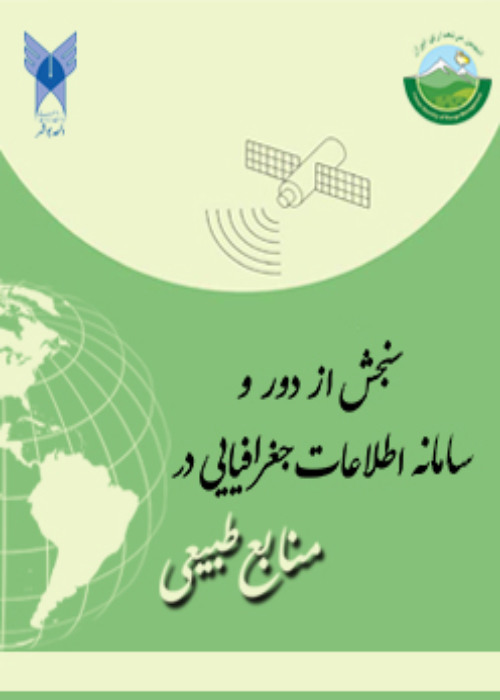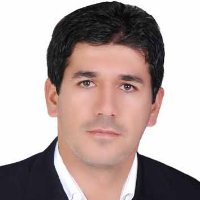Preparation of curve number map and estimation of runoff height using geographic information system and remote sensing in North Karun Basin
Background and Objective:
North Karun watershed is one of the important sub-basins of the Great Karun River basin. In recent years, the occurrence of severe downstream floods in this basin has caused a lot of human and financial losses. Estimating the amount of runoff produced by rainfall is the main step in conducting a study on flood control and mitigation. Runoff estimation is one of the most important steps in the study of watershed hydrology for flood management, water resources management and soil conservation activities. Runoff is produced as a result of excess rainfall on soil infiltration and surface maintenance and depends on various factors such as physical characteristics of the basin, rainfall and infiltration. The rainfall-runoff relationship has been studied by scientists and researchers and many models have been proposed to simulate this process. One of the basic models in this field is the curved number method model that was proposed by the US Soil Conservation Service and was named the Soil Conservation Service Curve Number or SCS-CN. The SCS-CN model is one of the simple and empirical models in the field of rainfall-runoff that is widely used in estimating runoff height around the world. The curve number (CN) of each basin indicates the hydrological behaviour and runoff generation capacity of that basin during rainfall and its value is estimated from the standard table in which the soil properties with a hydrological factor that indicates the minimum infiltration rate in the long-wet state. It is the duration of the soil, it is expressed. Accordingly, the US Soil Conservation Service has divided all soils into four main groups, A, B, C and D, with high, medium, low and very low infiltration rates, respectively. Due to the high time consumed in calculating this method, traditionally and manually, researchers used remote sensing and geographical information systems technologies to calculate it. To do this, they designed an extension called ArcCN-Runoff that can be added to the GIS environment. The purpose of this study is to generate a curve mapping (CN) and estimate the runoff height in the North Karun Basin using Remote Sensing (RS) and Geographic Information System (GIS) technologies and the SCS-CN method.
Materials and Methods:
North Karun watershed is one of the most important watersheds in the country in providing water resources, which is located in the geographical position of 49o 35' to 51o 47' E longitude and 30 o 28' to 32 o 40' N latitude. This basin has an area of 23299.31 Km2, which is located in Kohgiluyeh and Boyer-Ahmad, Chaharmahal and Bakhtiari, Isfahan, Khuzestan and part of Fars province. In order to produce curve number maps and estimate runoff height, first land use maps were generated using a supervised classification method using Landsat 8 satellite images of OLI sensors related to 2017 and the maximum likelihood algorithm was obtained. Then, the soil layer and soil hydrological groups of the basin were prepared based on the global soil map produced by the Food and Agriculture Organization (FAO) and the SCS standard table for different soil hydrological groups. By combining land use maps and soil hydrological groups with the Perform Intersect command in the ArcCN-Runoff GIS environment, a curved number (CN) map was generated and edited and finalized based on the SCS-CN table. Finally, by generating a spatial distribution map of precipitation by IDW method at the basin level, runoff height or excess precipitation height was obtained by the SCS-CN method. The final runoff height map was divided into five categories: very low, low, medium, high and very high.
Results and Discussion :
The results showed that a large area of the basin has a slope of more than 30%. Slope can be considered the most important physiographic factor in runoff production in watersheds. According to the land use map, the highest level of use is related to the oak forests of Zagros and rangelands. Due to the type of oak forests that have low density and also poor pastures in the basin due to overgrazing, runoff production is high in these uses. The curve number map also indicates that the maximum and minimum curve number values are in basins 98 and zero. In areas with high curve numbers, the potential for runoff production is high and these areas are related to areas with poor vegetation in the basin. Areas with high curve numbers and high runoff production are mostly related to the calcareous formations of the basin, including the Bakhtiari and Asmari formations, which have formed the high altitudes of the basin, including the Dena Mountains. Also, areas with medium and low CN are mostly related to forest and pasture uses, in which the potential for runoff production is moderate. On the other hand, due to the fact that most of the precipitation in the basin heights is snow, there is an opportunity to penetrate into the soil and as a result, the amount of runoff production is less. The calcareous formations in the basin, which form most of the Zagros highlands, penetrate rainfall through pores and fractures and feed groundwater, which is why we often encounter a large number of springs in these areas. On the other hand, the results of the runoff map indicate that the Zagros heights, which have a high slope, play a major role in runoff production. These areas are mostly located in the southern and southeastern areas of the basin, as well as northwest of the basin.
Conclusion :
A large area of the basin has the potential to produce moderate runoff, which can lead to flooding downstream of the basin. Therefore, it is necessary to implement conservation and watershed management measures in the branches and areas where the flow occurred. Due to the fact that the basis of calculations in preparing maps of curve number and runoff height are raster layers, each pixel of which has a value, the calculations are done and the results are much closer to reality and save time and money.
- حق عضویت دریافتی صرف حمایت از نشریات عضو و نگهداری، تکمیل و توسعه مگیران میشود.
- پرداخت حق اشتراک و دانلود مقالات اجازه بازنشر آن در سایر رسانههای چاپی و دیجیتال را به کاربر نمیدهد.



